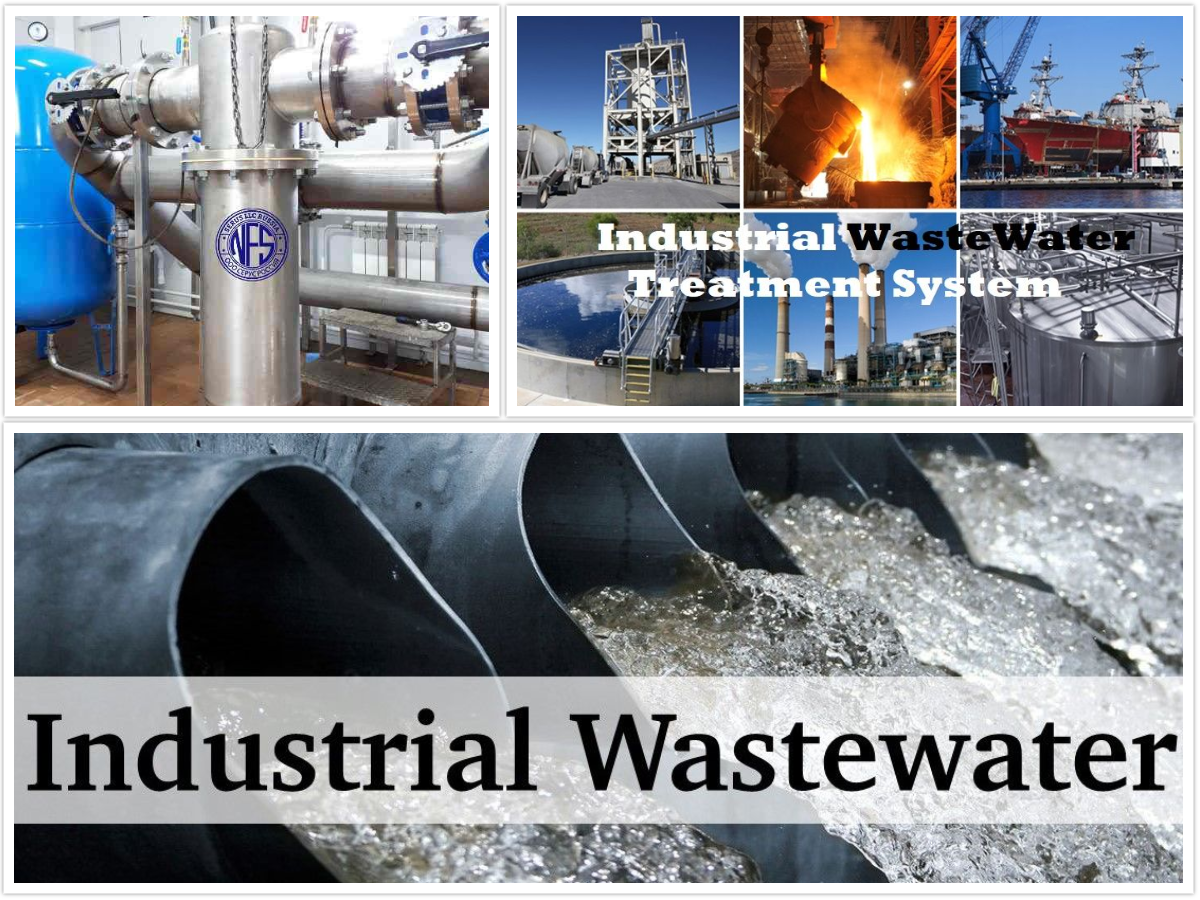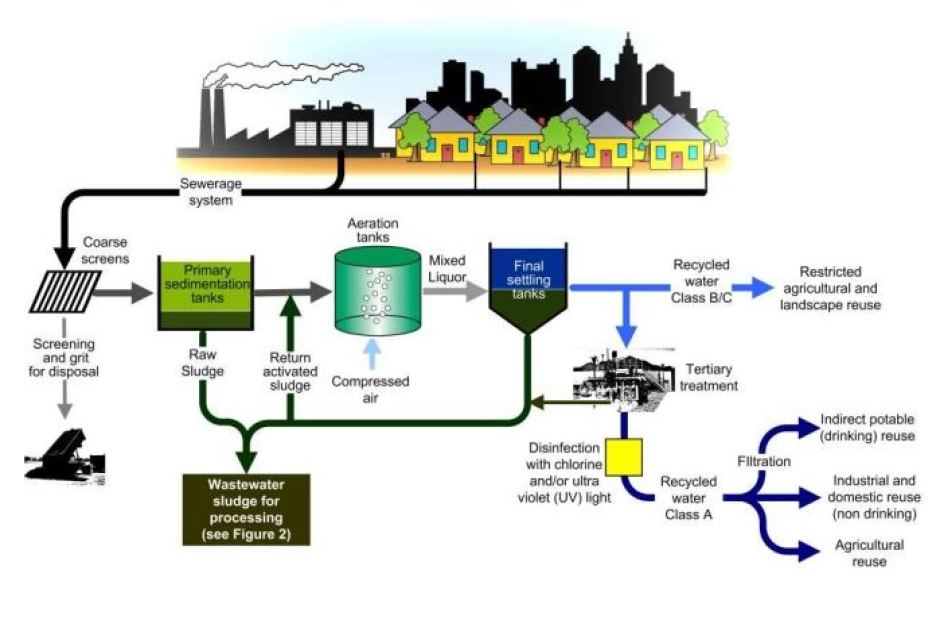Industrial Waste Water Treatment-- Advanced Solutions for Cleanser Effluents
Industrial Waste Water Treatment-- Advanced Solutions for Cleanser Effluents
Blog Article
Challenges and Solutions in Hazardous Waste Water Therapy
The therapy of commercial wastewater provides a multifaceted array of challenges, varying from rigorous regulative compliance to the complexities of cost monitoring and technical restrictions. The variability in waste make-up better makes complex the efficiency of traditional therapy techniques, typically resulting in escalated functional expenses.
Regulatory Compliance Obstacles
Just how can industrial centers browse the complicated landscape of governing compliance in wastewater therapy? The regulative structure controling wastewater management is complex, usually varying by territory and type of sector.
To effectively handle these conformity difficulties, centers should execute durable monitoring and reporting systems that make sure real-time information collection and analysis. Routine audits and threat analyses can identify prospective conformity gaps, allowing for positive changes in treatment processes. Worker training programs concentrating on governing knowledge and best methods are necessary to foster a culture of compliance within the organization.
Furthermore, involving with regulatory companies can provide useful insights and clear up ambiguous policies. Facilities might also profit from seeking advice from environmental specialists who concentrate on wastewater treatment compliance, ensuring that they stay informed of evolving policies. By taking on these strategies, industrial centers can not just meet compliance needs but likewise improve their functional efficiency and environmental stewardship.
Expense and Financial Obstacles
Navigating regulatory conformity in wastewater therapy often provides considerable economic obstacles for industrial facilities. The expenses connected with applying essential treatment technologies, preserving compliance with rigid laws, and taking care of operational expenses can be daunting. Numerous organizations deal with high preliminary funding expenses for the building or updating of wastewater therapy plants, which may strain budget plans, particularly for medium-sized and little business.
Moreover, continuous operational expenses, including labor, maintenance, and chemical inputs, add to the monetary concern. The unpredictability of changing energy prices and the prospective need for additional investments to fulfill advancing laws aggravate these financial pressures. In numerous cases, the absence of economic rewards or support from government bodies makes it much more difficult for companies to justify financial investments in sophisticated treatment systems.
Additionally, the financial feasibility of wastewater treatment solutions is usually examined, especially for industries with limited profit margins. Therefore, it is essential for commercial facilities to discover cost-effective techniques, such as adopting cutting-edge financing alternatives, taking part in partnerships, and leveraging arising technologies that can aid alleviate these economic barriers while ensuring conformity with environmental criteria.

Technical Limitations
Many technical restrictions hinder the performance of commercial wastewater treatment processes. One substantial difficulty is the inadequacy of existing treatment modern technologies to attend to complicated contaminants. Several traditional methods, such as turned on sludge and chemical rainfall, have problem with the elimination of emerging pollutants, consisting of pharmaceuticals and microplastics. This restriction frequently causes the discharge of improperly treated water, which can have damaging environmental influences.
Additionally, the scalability of therapy modern technologies presents an obstacle. While some innovative methods, like membrane layer filtering or sophisticated oxidation, reveal promise in regulated atmospheres, their execution on a bigger scale can be practically challenging and excessively pricey. Maintenance and functional intricacies further complicate the fostering of these systems, specifically for smaller markets with minimal technical know-how.
The integration of real-time tracking innovations additionally remains insufficient in lots of therapy centers. Without effective surveillance systems, drivers can not effectively assess treatment effectiveness or find possible failings, leading to inconsistent effluent quality. As a result, attending to these technical constraints via study and growth, alongside investment in innovative solutions, is essential for enhancing the efficacy of industrial wastewater treatment and ensuring regulatory compliance. Industrial Waste Water Treatment.
Irregularity in Waste Make-up
In the realm of industrial wastewater treatment, the irregularity in waste structure presents a formidable obstacle. Industries produce wastewater with diverse characteristics, affected by aspects such as production processes, resources, and operational practices. This diversification makes complex the treatment procedure, as traditional systems frequently struggle to properly deal with the wide array of contaminants present.
For circumstances, wastewater from food processing might include high levels of natural matter, while effluents from chemical production might include heavy steels and hazardous materials. This variation requires versatile treatment strategies to guarantee compliance with ecological policies and shield public health and wellness. In addition, changes in waste make-up can happen with time, influenced by adjustments in production routines, upkeep activities, or the intro of brand-new products.

Innovative Therapy Solutions
Innovative treatment remedies are vital for addressing the complexities of commercial wastewater management. Typical methods commonly fall short in properly removing a large range of pollutants, specifically in facilities with diverse effluent streams. Current advancements concentrate on incorporating cutting-edge technologies to improve therapy efficiency and sustainability.
One appealing technique is using sophisticated oxidation procedures (AOPs), which leverage powerful oxidants to deteriorate natural toxins. AOPs, including photocatalysis and ozonation, can considerably minimize poisonous substances and improve effluent high Home Page quality. In addition, membrane layer bioreactor (MBR) technology has gotten grip, combining biological treatment with membrane layer purification, sites causing top quality effluent and minimized impact.
An additional cutting-edge remedy is the execution of resource recovery systems. Techniques like anaerobic digestion not only treat wastewater but also create biogas, which can be taken advantage of as a renewable resource resource. The adoption of artificial knowledge and equipment discovering designs can optimize treatment procedures by anticipating variations in wastewater make-up, therefore improving operational efficiency.
These cutting-edge options not only address regulatory conformity however also advertise environmental sustainability, paving the way for an extra durable and efficient industrial ecological community.
Verdict
In final thought, addressing the obstacles of industrial wastewater therapy needs a multifaceted strategy that incorporates regulative compliance, expense management, and technical developments. Cutting-edge services, such as innovative oxidation processes and membrane layer bioreactor technology, deal pathways to improve treatment effectiveness. Furthermore, real-time surveillance systems and collaborative interaction with regulatory companies can advertise sustainable methods while mitigating economic stress. A dedication to constant improvement in treatment techniques will eventually add to the effective administration of commercial wastewater and ecological protection.
The therapy of commercial wastewater provides a complex variety of obstacles, ranging from rigorous regulatory compliance to the ins and outs of cost monitoring and technical limitations. Industrial Waste Water Treatment.Browsing regulative conformity in wastewater therapy frequently provides considerable economic obstacles for industrial facilities. Addressing these technological restrictions Extra resources with research study and growth, alongside financial investment in cutting-edge options, is critical for boosting the efficacy of commercial wastewater therapy and making sure regulative compliance
Wastewater therapy centers should invest in durable tracking systems and flexible treatment modern technologies capable of accommodating differing influent attributes.In conclusion, addressing the obstacles of industrial wastewater therapy needs a multifaceted strategy that incorporates regulatory conformity, expense management, and technical developments.
Report this page